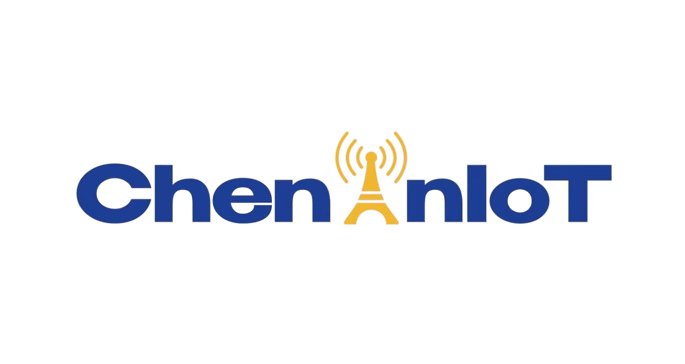Smart Home and Building Industry Trends 2025 to 2030 (In-depth Analysis)
Introduction: Towards a New Era of Intelligent Living
With the rapid development of artificial intelligence and the Internet of Things, the smart home and building industries are undergoing a revolutionary transformation. From 2025 to 2030, these technologies will deeply integrate, bringing revolutionary changes to our lives and work.

Core Development Trends
-
Deep Integration of Artificial Intelligence and the Internet of Things
- Rise of Edge Computing:
- Edge computing will enable intelligent devices to have stronger real-time processing capabilities, reducing reliance on the cloud and achieving faster and more reliable responses. For example, smart cameras can perform facial recognition locally without uploading data to the cloud, significantly improving response speed.
- Maturity of AIoT Platforms:
- Unified AIoT platforms will break down barriers between devices, enabling data sharing and collaboration, and promoting the prosperity of the smart home ecosystem. According to Gartner, by 2025, over 50% of enterprises globally will adopt AIoT platforms.
- Personalized Customization Services:
- AI will provide highly personalized services through deep learning of user behavior and preferences. For example, smart home systems can automatically adjust indoor temperature, humidity, and lighting based on user habits.
-
Comprehensive Upgrading of Smart Homes
- Whole-House Intelligence:
- Smart home systems will cover every corner of the home, realizing comprehensive intelligence in lighting, security, entertainment, and health. According to Statista, the global smart home market size will reach 178 billion US dollars by 2025.
- Prevalence of Voice Interaction:
- Voice assistants will become the core interaction mode for smart homes, enabling more natural and convenient human-computer interaction. Amazon Alexa, Google Assistant, and other voice assistants will become standard features of smart homes.
- Health Monitoring and Management:
- Smart homes will combine with health and medical data to provide personalized health management solutions. For example, smart mattresses can monitor users’ sleep quality and provide suggestions for improving sleep.
-
Green and Intelligent Development of Smart Buildings
- Rise of Green Buildings:
- Smart buildings will pay more attention to energy conservation and environmental protection, achieving efficient energy utilization through intelligent energy management systems. Statistics show that smart buildings consume more than 20% less energy than traditional buildings.
- Intelligent Office Space:
- Office spaces will become more flexible and intelligent, improving work efficiency and employee satisfaction through intelligent office equipment and systems.
- Construction of Smart Communities:
- Smart communities will realize the intelligence of community services, property management, transportation, and other aspects, improving residents’ quality of life.
-
Innovation Driven by Emerging Technologies
- Widespread Application of 5G Technology:
- 5G networks will provide high-speed and low-latency connections for smart homes and buildings, supporting the access and real-time data transmission of more intelligent devices.
- Introduction of Blockchain Technology:
- Blockchain technology will ensure data security, realize decentralized data management, and improve user privacy protection.
- Integration of AR/VR Technology:
- AR/VR technology will bring new interactive ways to smart homes, achieving seamless integration of the virtual and real worlds. For example, users can view furniture placement effects through AR glasses.
Industry Chain Analysis
The smart home and building industry chain mainly includes upstream chip, sensor, and software development, midstream intelligent device manufacturers, platform service providers, and downstream system integrators and users. With the continuous improvement of the industry chain, industry competition will become increasingly fierce, and industry concentration will further increase.
Policy Interpretation
Governments around the world are introducing policies to support the development of smart homes and buildings, such as “Made in China 2025”. Policy support will further promote the development of the industry, but also put forward higher requirements for enterprises, such as data security and privacy protection.
Challenges and Opportunities
- Data Security and Privacy Protection:
- With the proliferation of smart devices, data security and privacy protection issues have become increasingly prominent.
- Standardization and Interoperability:
- There is a lack of unified standards and poor interoperability among intelligent devices from different manufacturers.
- Improving User Experience:
- How to improve user experience and make smart homes and buildings easier to use is an important challenge facing the industry.
Future Outlook
From 2025 to 2030, artificial intelligence, the Internet of Things, and other technologies will continue to drive the development of the smart home and building industry. As technology matures and costs decrease, smart homes will move from high-end markets to mass markets, becoming part of people’s lives. Smart buildings will also become an important part of urban construction, providing people with more comfortable, convenient, and intelligent living and working environments.
Conclusion
In the coming years, the smart home and building industry will experience explosive growth. Through the deep integration of artificial intelligence, the Internet of Things, and other technologies, we will enter a more intelligent, convenient, and comfortable living era.
Share this:
- Click to share on Facebook (Opens in new window) Facebook
- Click to share on X (Opens in new window) X
- Click to share on WhatsApp (Opens in new window) WhatsApp
- Click to email a link to a friend (Opens in new window) Email
- Click to share on Reddit (Opens in new window) Reddit
- Click to share on LinkedIn (Opens in new window) LinkedIn
- Click to share on Pinterest (Opens in new window) Pinterest
- Click to share on Telegram (Opens in new window) Telegram
Related
Discover more from ChenAnIoT
Subscribe to get the latest posts sent to your email.




